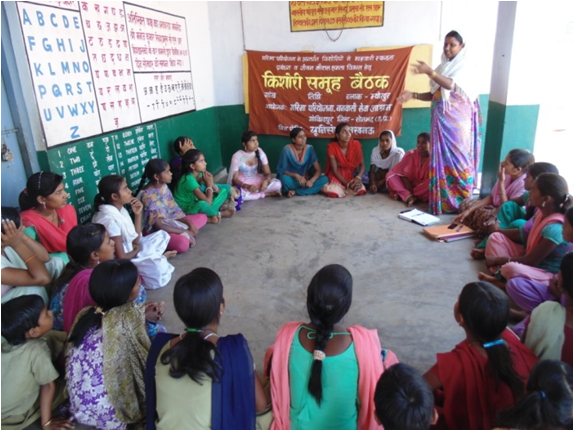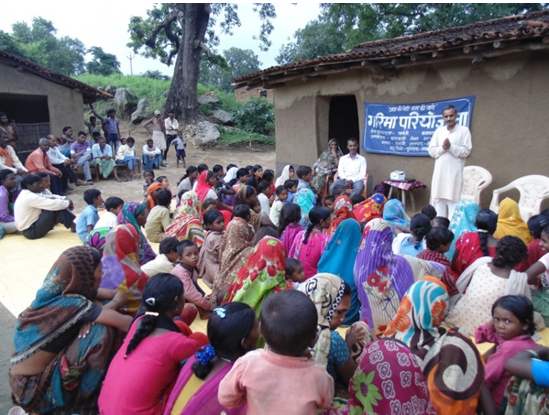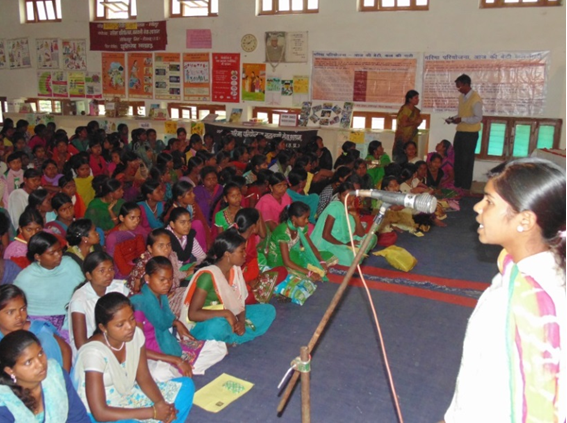GARIMA Project

A school level meeting of a group of adolescent girls

A village level meeting in GARIMA project

An adolescent girl addressing a gathering of adolescent girls in Ashram
Funding Agency: UNICEF
Period: 2014 – (Ongoing)
This project pilots a social and behavioural change in communication strategy on menstrual hygiene management among rural adolescent girls (in the age group 10-19 years, who have experienced, or are about to experience menarche) and among women in Sonbhadra district. A baseline study conducted earlier had revealed that current practices adopted by adolescent girls to deal with menstruation were hygienically very poor. This project is an attempt to address this problem by creating awareness among adolescent girls and their influencers. The main goal of the project is to increase the number of adolescent girls who are able to understand the menstruation cycle and the benefits of menstrual hygiene. This project aims at ensuring the following specific outputs in the selected project villages:
- Adolescent girls in the project villages are able to: (a) understand menstruation, and the benefits of maintaining menstrual hygiene, (b) are comfortable about discussing menarche related issues with peer educators and village level frontline workers; (c) can talk freely and are not embarrassed by menarche, and (d) know about the availability of sanitary options (e.g. napkins) and begin using them during the menstrual cycles, if available.
- Village level Frontline Workers (ASHA workers, Anganwadi workers), Mothers Groups), promoters and peer educators (identified as influential sources) are equipped with the knowledge and skills to conduct interpersonal communication and community mobilisation, to promote understanding of menstruation and menstrual hygiene management.
The main activity of the project is reaching out to the primary stakeholders i.e. adolescent girls. The project, besides reaching out to the adolescent girls, gives equal importance to reaching out to the influencers – mothers, peers, older women in the family as well as the teachers and health workers in the community, who build an enabling environment and create space for communication on menstrual health and hygiene. The implementation strategy has been designed as per a socio-ecological model where the adolescent girl is at the nucleus of the programme. The adolescent girls and other actors, impacting menstrual hygiene and management at the societal and institutional level, are being reached through
(a) school level meetings with groups of adolescent girls and with school management committees,
(b) village level meetings with different groups (such as adolescent girl group, mother group) and
(c) block level gatherings of adolescent girls and their influencers.
Awareness generation and dissemination of information is carried out through a mix of communication approaches such as group discussions, art competitions, film screenings and distribution of material (booklets) for interpersonal communication. Also, meetings are conducted with the male members in villages for sensitising them about the issues related to gender equality.
